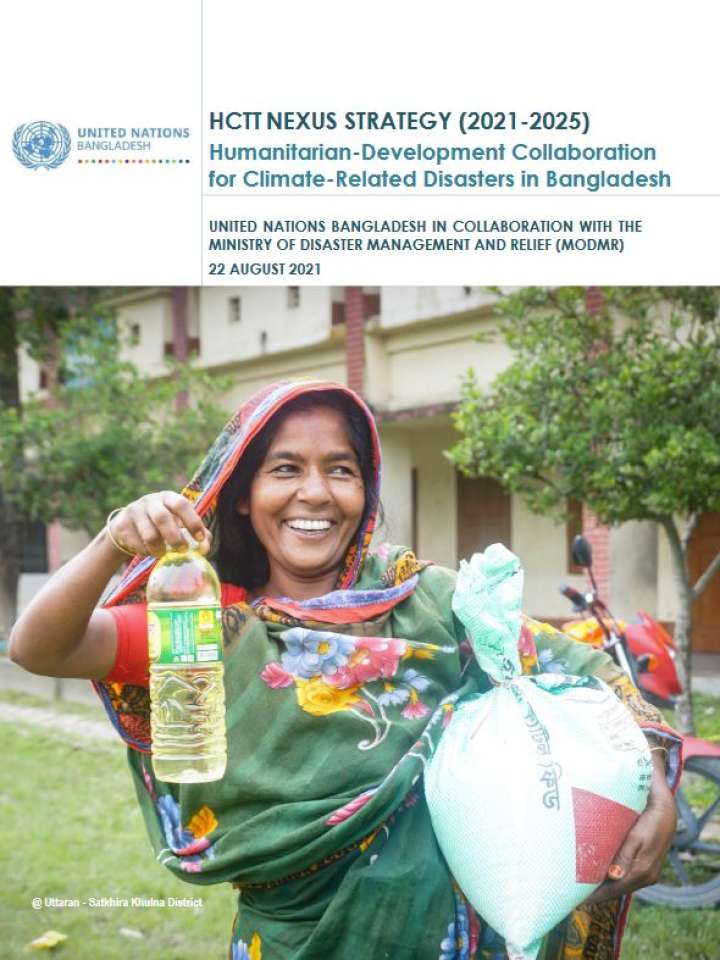HCTT nexus strategy (2021-2025)
The HCTT Nexus Strategy for Climate-related Disasters 2021-2025 is a humanitarian preparedness and response strategy developed to support the National Plan for Disaster Management (NPDM) 2021-25 and to complement the UN Sustainable Development Cooperation Framework (UNSDCF) for Bangladesh in relevant areas. The document portrays an evidence-based estimate of humanitarian needs in the disaster situation, combining existing analysis on climate-related risks with humanitarian conditions across high-risk districts in Bangladesh. The focus is on three climate-related hazards: floods, cyclones and storm surges, and landslides. Based on this analysis and estimated humanitarian impacts, the Nexus Strategy outlines strategic objectives and key actions for 2021-2025 across the areas of risk and impact analysis, priority preparedness action, partnership for institutional capacity and action plan for response.
The document aims:
- To lay out strategic objectives to coordinate and improve the quality and effectiveness of HCTT’s interventions to climate-related disasters and create linkages for collaboration with DRR and development stakeholders.
- To support the planning of mitigation, preparedness, response, and early recovery efforts to climate-related disasters by providing a solid evidence base in the form of multi-hazard risk analysis and humanitarian impact forecast from 2021 to 2025.
- To support inter-agency readiness for responding to the climate-related disaster in support of national government preparedness efforts- aiming at anticipating – not wait for – humanitarian crises based on the Emergency Response Preparedness.
- To enhance the humanitarian community’s ability to support GoB-led response efforts with speed, volume, and quality by providing evident preparedness and response activities for all clusters.
- To provide a costed contingency plan that can form the framework for an HCTT coordinated response plan once activated.
Explore further
